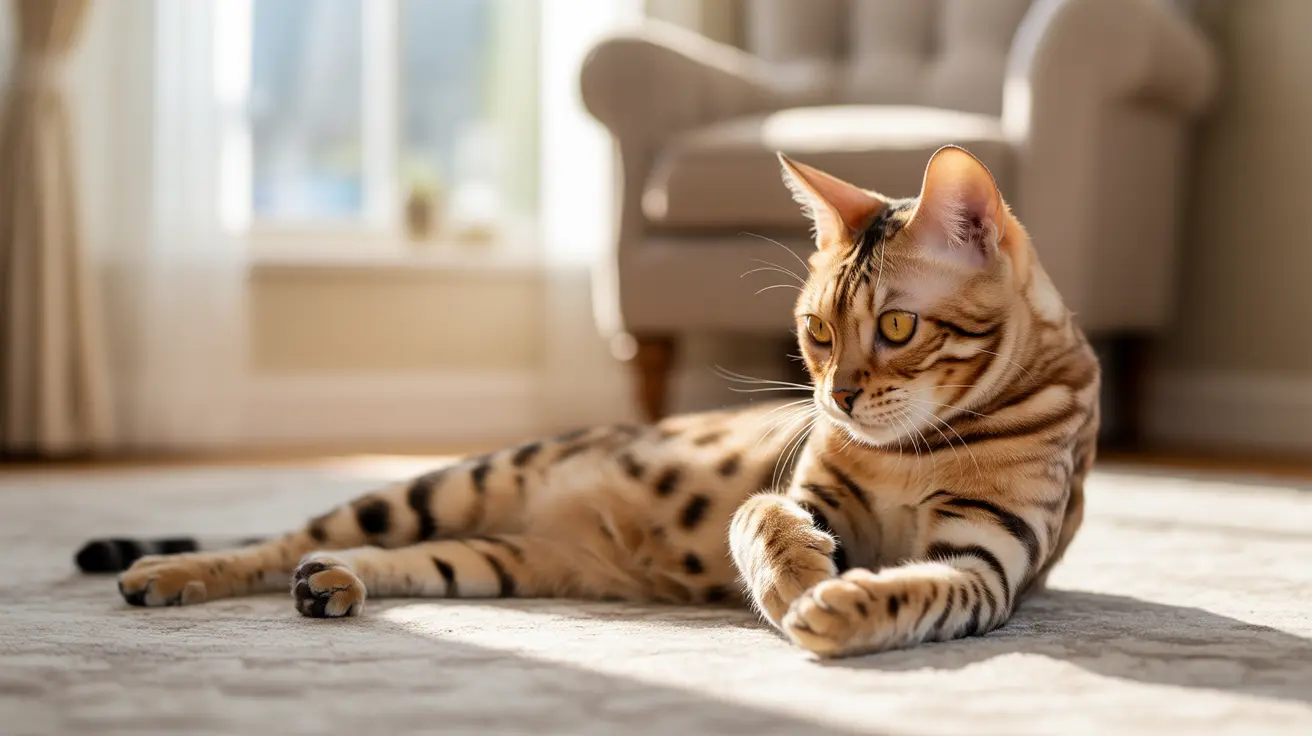If you've noticed your cat is limping but still jumping and running, you might feel confused about the severity of the situation. This seemingly contradictory behavior is actually quite common in cats, but it shouldn't be dismissed. Understanding why cats may limp while remaining active is crucial for determining when veterinary care is needed.
Cats are masters at masking pain, an evolutionary trait that helped their wild ancestors survive by not appearing vulnerable to predators. This instinct, combined with adrenaline during play or excitement, can lead to a cat continuing normal activities despite an injury.
Common Causes of Limping in Active Cats
Soft Tissue Injuries
Minor sprains and strains are frequent causes of limping in cats who remain active. These injuries often occur from awkward landings or overenthusiastic play. While the cat may favor the affected limb during regular walking, the different mechanics of running and jumping might not trigger the same pain response.
Joint Issues and Arthritis
Early-stage arthritis or joint inflammation can cause intermittent limping, particularly after rest periods. Many cats appear normal during active play when their joints are warmed up and adrenaline is flowing, only to show signs of discomfort later.
Paw Problems
Foreign objects, cuts, or damaged claws can cause pain when walking but may not significantly impact jumping or running. These injuries often require close inspection to identify, as they can be quite small yet cause noticeable discomfort.
When to Be Concerned
Immediate Veterinary Care Needed
Seek veterinary attention if you notice:
- Severe or sudden limping
- Unable to put any weight on the leg
- Visible swelling or wounds
- Signs of infection (heat, redness, discharge)
- Behavioral changes like aggression or withdrawal
Watch and Wait Situations
Monitor your cat for 24-48 hours if:
- The limp is mild
- Your cat is otherwise behaving normally
- There are no visible injuries
- Your cat is eating and using the litter box as usual
Home Care and Assessment
Initial Examination
Carefully check your cat's affected limb, looking for:
- Cuts or puncture wounds
- Swelling or heat
- Stuck objects between toes
- Damaged or torn claws
- Sensitivity to touch
Supportive Care
While monitoring your cat:
- Limit activity if possible
- Provide easy access to food, water, and litter
- Never give human pain medications
- Keep the cat indoors to prevent further injury
Preventing Future Issues
To minimize the risk of limping injuries:
- Maintain a healthy weight
- Provide appropriate scratching posts and climbing structures
- Keep nails properly trimmed
- Regular veterinary check-ups
- Consider making your home more senior-cat friendly if needed
Frequently Asked Questions
Why is my cat limping but still able to jump and run?
Cats can often continue jumping and running despite limping due to adrenaline and their natural instinct to hide pain. The mechanics of different movements may also affect how much discomfort they experience.
What are the most common causes of limping in cats who remain active?
Common causes include soft tissue injuries, minor sprains, early arthritis, paw injuries, and foreign objects stuck in paws. These issues may cause pain during walking but not necessarily during other activities.
How can I tell if my cat's limp requires a veterinary visit?
Seek veterinary care if the limping is severe, persists beyond 48 hours, is accompanied by swelling or wounds, or if your cat shows signs of significant pain or behavioral changes.
What should I check at home if my cat is limping but still jumping?
Examine the affected limb for visible injuries, swelling, heat, or foreign objects. Check between the toes and paw pads, and observe your cat's behavior and ability to bear weight on the leg.
Can joint problems or arthritis cause a cat to limp intermittently while playing?
Yes, joint problems and arthritis can cause intermittent limping, especially after rest periods. Cats may appear normal during play when their joints are warmed up but show stiffness or discomfort at other times.






